Iceland may be small, but it’s got personality in spades – and it’s the perfect destination if you love being in nature.
Whether you’re hiking across glaciers, spotting puffins, or hunting for the northern lights, Iceland is all about enjoying a scenic adventure in the wilderness. The great outdoors aside, there is plenty to do here if you’re a foodie, history buff, or culture vulture.
To inspire your Icelandic escape, we’ve compiled a list of our favourite things to do in Iceland that we recommend you try. You'll get insider tips and inspiration straight from Reykjavík-based experts.
- Find your escape with these top vacations in Iceland
Contents: What to see and do in Iceland
- Marvel at waterfalls
- Hike in national parks
- Dip in hot springs and pools
- Look for whales and puffins
- Hunt for the northern lights
- See geothermal wonders and volcanoes
- Go horse riding
- Walk along unusual beaches
- Taste Icelandic cuisine
- Venture off the beaten track
- Admire glacier lagoons
- Try ice caving
- Hike on glaciers
- Snorkel and dive
- Explore the highlands in a 4x4
- Go snowmobiling in winter
- Get to know the locals
1. Marvel at waterfalls
Iceland is a land of waterfalls, where glacial meltwater and rain combine to create countless cascades across the country. These natural wonders are a highlight of any tour of the island.
In the south, you’ll find Seljalandsfoss and Skógafoss, iconic stops along the Ring Road and the Golden Circle. A short walk from Seljalandsfoss, don’t miss Gljúfrabúi, a secret waterfall hidden behind a cliff. Venture to the Vatnajökull National Park for Svartifoss, framed by striking basalt columns. Or Hjálparfoss, a tranquil double surge of fresh water.
The east offers sights like Hengifoss, with its layered red basalt cliffs, and Gufufoss near Seyðisfjörður.
In the north, Dettifoss will leave you speechless with its raw power. Meanwhile, Goðafoss, or “Waterfall of the Gods”, will enchant you with its beautiful horseshoe-shaped falls. If you’re exploring the west, Dynjandi in the Westfjords is a must-see, as are Hraunfossar’s streams, which ripple across lava fields.
Whether you’re drawn to well-known spots or off-the-beaten-path treasures, waterfalls in Iceland promise unforgettable experiences.
Hiking trails often allow you to get close enough to feel the spray on your face and, on sunny days, spot the rainbows in the mist. Whenever you visit, getting up close to one of these thundering waterfalls is an unforgettable experience.
- Related: Top waterfalls in Iceland

2. Hike in national parks
Iceland’s 3 national parks not only boast astonishing natural beauty, but they’re also rich with cultural significance. Come here to hike, horseback ride, and tour the numerous historic sites – you’ll find plenty to keep you busy.
Þingvellir National Park
Discover incredible hiking trails at Þingvellir, where the North American and Eurasian tectonic plates meet. Walk through the dramatic Almannagjá gorge or explore paths leading to Þingvallavatn, Iceland’s largest natural lake.
Þingvellir National Park is a must-visit for Game of Thrones fans. The canyon near Öxarárfoss waterfall was used as the Bloody Gate, the fortress guarding the Vale of Arryn. You might recognise it from Season 4, where it appeared in a few key scenes.
Along the way, uncover the historic site of the Althing (“Alþingi”), the world’s oldest parliament.
- Related: Best hikes in Iceland
Vatnajökull National Park
Hike among the awe-inspiring landscapes at Vatnajökull, home to Europe’s largest glacier. Trails range from scenic walks near Jökulsárlón glacier lagoon to challenging routes up Hvannadalshnúkur, Iceland’s highest peak.
These paths reveal a land shaped by ice and fire, with glacier tongues, waterfalls, and volcanic terrain.
Snæfellsjökull National Park
Explore coastal trails and volcanic scenery in Snæfellsjökull. Hike beneath the iconic glacier-capped volcano or venture to Rauðfeldsgjá Gorge for a dramatic trek. Other routes take you to the cliffs of Arnarstapi and Hellnar, offering incredible views and opportunities to spot seabirds along the way.
Beyond the national parks, Iceland is brimming with incredible trails like Reykjadalur, where you can soak in natural hot springs after your hike. Or places like the otherworldly Stórurð Boulder Field in East Iceland.
- Go hiking in Iceland on a multi-day trip
- Related: Iceland’s hidden gems – Things to do off the beaten path

3. Dip in hot springs and pools
Due to the high levels of volcanic activity, hot pools here are abundant – and bathing in them is an absolute must-do in Iceland! Whether you prefer luxurious complexes or remote, rustic settings, there’s a hot spring for you.
Most hot springs maintain the temperature of a perfect bath with soothing mineral-rich waters. They’re especially magical during colder months when the steam rises dramatically against frosty landscapes. As any Icelander will tell you, soaking in the warm waters is the perfect way to wind down after a long day.
Here are our favourite Icelandic hot springs:
Hvammsvík Hot Springs
Soak in peaceful waters at Hvammsvík, perched alongside the Hvalfjörður fjord. You’ll be surrounded by mossy hills and still waters, making it the perfect place to unwind and reconnect with nature. Each pool is a little different, so you can find your perfect temperature and just let go.
- Related: Nordic spa and wellness traditions
Vök Baths
Soak in wooden pools built into Lake Urriðavatn in East Iceland. You'll feel as if you're floating in the lake itself, but you'll actually be drifting on soothing, warm water. It’s an ideal place to relax and enjoy the natural beauty after a day of exploring.
Forest Lagoon
Tucked away in the woods near Akureyri in North Iceland, Forest Lagoon offers a luxurious escape. Enjoy amenities like the infinity pools, swim-up bars, Finnish sauna, and the plunge pool.
Surrounded by forests and fjords, you'll truly feel immersed in Iceland's pristine nature.
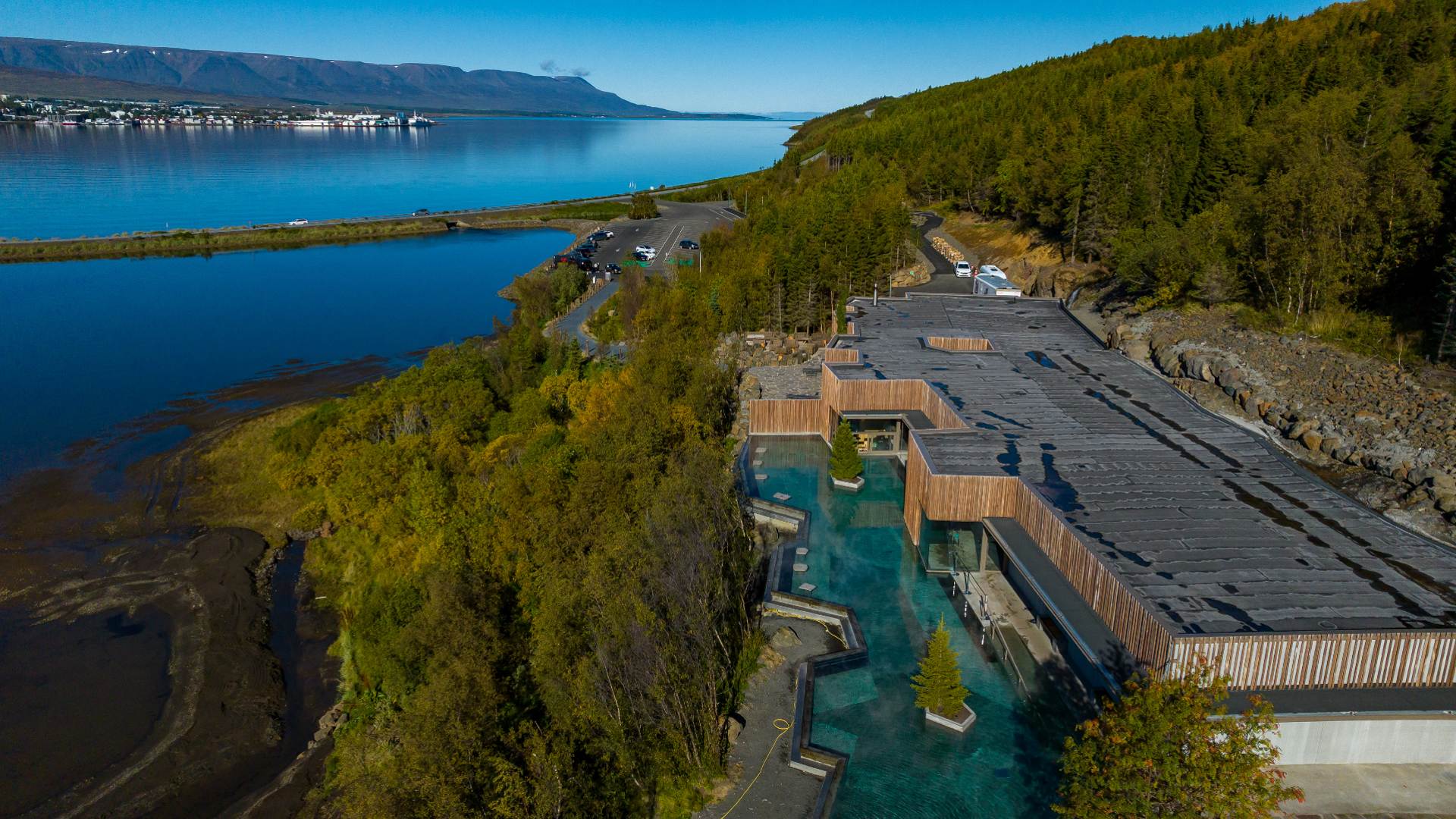
Of course, the iconic Blue Lagoon and the sleek Sky Lagoon are favourites for their world-class amenities. And they’re certainly worth visiting on your tour. But exploring less well-known spots adds a special touch to your Iceland journey.
Fortunately, with so many thermal spas across the island, you’ll find it easy to indulge in multiple spa experiences on your trip.

4. Look for whales and puffins
Iceland’s deep waters, temperate climate and rugged coastlines make it a haven for birds and marine animals. Venture here and channel your inner David Attenborough, taking to the water on a boat tour or enjoying a scenic coastal walk.
During the summer, Iceland hosts 60% of the world’s Atlantic puffin population, along with other seabirds that migrate here to nest and mate. Arctic terns, guillemots, and kittiwakes join the scene, making Iceland a hotspot for bird enthusiasts.
For the best chance to spot this wildlife, head to Reykjavík in the summer and book a whale and puffin-watching tour.
If you’re a whale enthusiast, you can marvel at the marine giants that visit these shores, including minke, humpback, and orca whales. The best time to enjoy whale watching is between June and September when these majestic creatures are most active.
- Spot native wildlife on a summer tour of Iceland
- Related: Things to see in Iceland during summer

5. Hunt for the northern lights
When you’re thinking about what to do in Iceland, chasing the aurora borealis might be on your travel wish list. The island’s northerly location and large areas of wilderness make it one of the best places in the world to spot them.
This incredible natural phenomenon occurs when charged solar particles collide with the Earth’s magnetic field, causing swathes of colourful light to ripple across the sky.
The northern lights are common in Iceland but never a guarantee. To see them you’ll need to be somewhere with little light pollution. Sightings also require a dark and cloudless sky.
Northern lights tours operate across the country from September to April and are a great way to increase your chances of seeing this magical display. The best time to see the northern lights is from October to March when the nights are darkest.
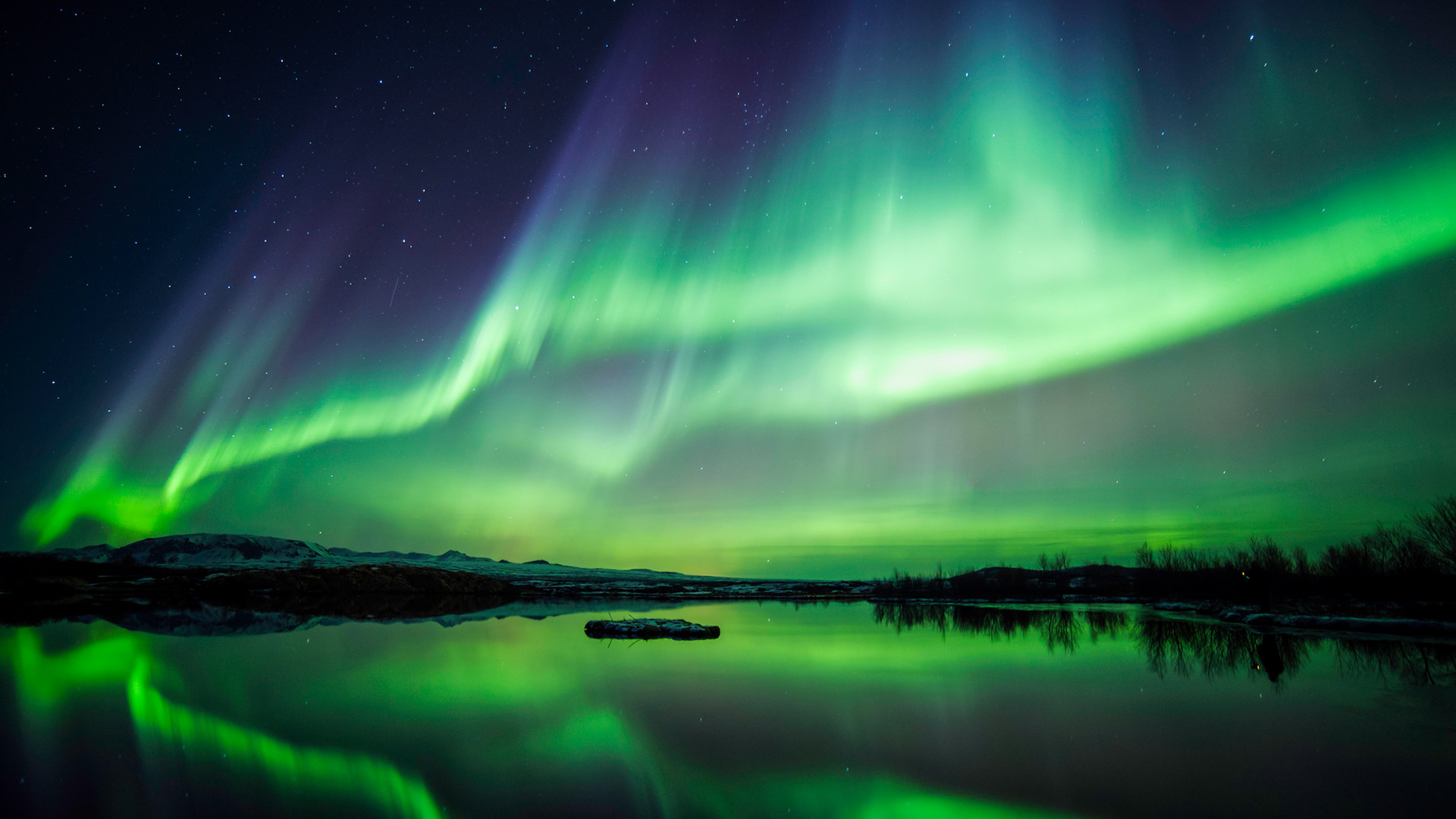
6. See geothermal wonders and volcanoes
Iceland sits between two tectonic plates in an area known as a hotspot, making it one of the most active volcanic regions on the planet. As a result, this island nation is home to numerous volcanoes and geothermal areas peppered with black-sand beaches, lava fields and geysers.
Visit the Eldhraun Lava Field and look out over an alien landscape of twisting black lava draped in green moss. Marvel at the Strokkur geyser, which erupts a dramatic burst of water and steam every 10 minutes.
You can even venture inside a dormant volcano, Þríhnúkagígur, descending into an ancient magma chamber. Or go underground into the Vatnshellir cave or Raufarhólshellir tunnel to glimpse Iceland’s surreal subterranean world.
- Join a guided group tour to see geothermal wonders in Iceland
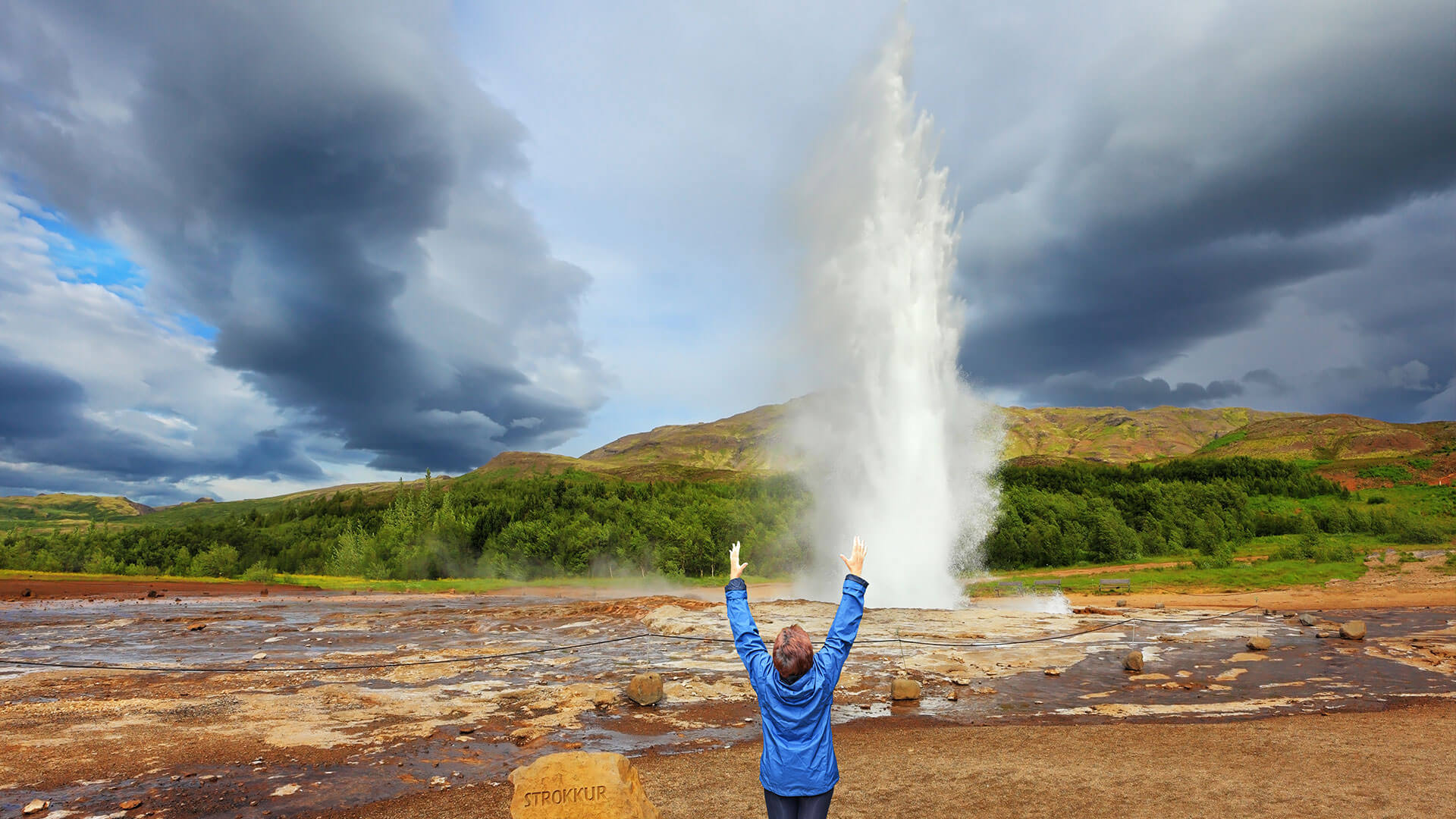
7. Go horse riding
A horseback tour is a great way to experience the Icelandic landscape. You can explore remote areas of natural beauty on horseback, which can be easily reached from Reykjavík. As a bonus, you’ll get to befriend a local Icelandic horse, an ancient breed unique to the country.
On a horse riding tour, you also get to enjoy a slice of Icelandic 'country' life – one of the few opportunities to really do so.” – Hallfríður Svala Ingimundardóttir, Iceland-based Travel Consultant.
Icelandic horses naturally have 5 different gaits, including tölt, which is notable for being smooth and bounce-free. Once you’ve had the crash course, you can get saddled up and set off, traversing craggy lava fields, tranquil farmland, and scenic riverside paths.
- Related: Horse riding in Iceland – Family fun
.jpg)
8. Walk along unusual beaches
Most beaches in Iceland are covered with black sand, formed after a volcanic eruption when lava enters the water and shatters into tiny pieces.
Diamond Beach, which borders a glacial lagoon, has a stretch of jet-black sand peppered with shards of crystalline ice. Meanwhile, you’ll find a stretch of incredible basalt stacks at Reynisfjara.
In the Westfjords, you can have a different experience visiting Rauðasandur (Red Sand) beach, where the sand has a pink-gold appearance. This beach is also fantastic for spotting seals and whales.
For a more traditional beach day, head to Nauthólsvík in Reykjavík, where you can relax on golden sand beside a geothermally heated lagoon.

9. Taste Icelandic cuisine
A trip to Iceland promises you a mouthwatering foodie experience. In the capital city, Reykjavík, you can sample both trendy modern meals and traditional Icelandic cuisine. You can even dine at a Michelin-starred restaurant!
Local staples include a fish and potato stew known as “plokkfiskur”, rye bread, and Icelandic lamb, which is often cooked into a hearty soup. Fresh fish and seafood are abundant, with langoustines a speciality on the south coast of Iceland.
The locals here also love their ice cream – especially from the legendary parlour Ísbúð Vesturbæjar in Reykjavík. So be sure to sample a scoop or two while in the capital.
- Related: Top things to do in Reykjavík

10. Venture off the beaten track
Most people visiting Iceland will stick to popular routes like the Ring Road, the Golden Circle, and Route 54, which loops around the Snæfellsnes peninsula. But we also recommend getting off the beaten track to explore the more remote regions.
For example, there’s plenty of things to do in the Westfjords. Here, you can visit the Hornstrandir Nature Reserve, marvel at the Dynjandi waterfall, and see the westernmost point in Europe. In the highlands, take a 4x4 through the winding, snow-dusted mountain roads and enjoy a high-altitude hike with volcanic views.
- Discover off-the-beaten-track tours of Iceland
- Related: Iceland's hidden gems – Things to do off the beaten path
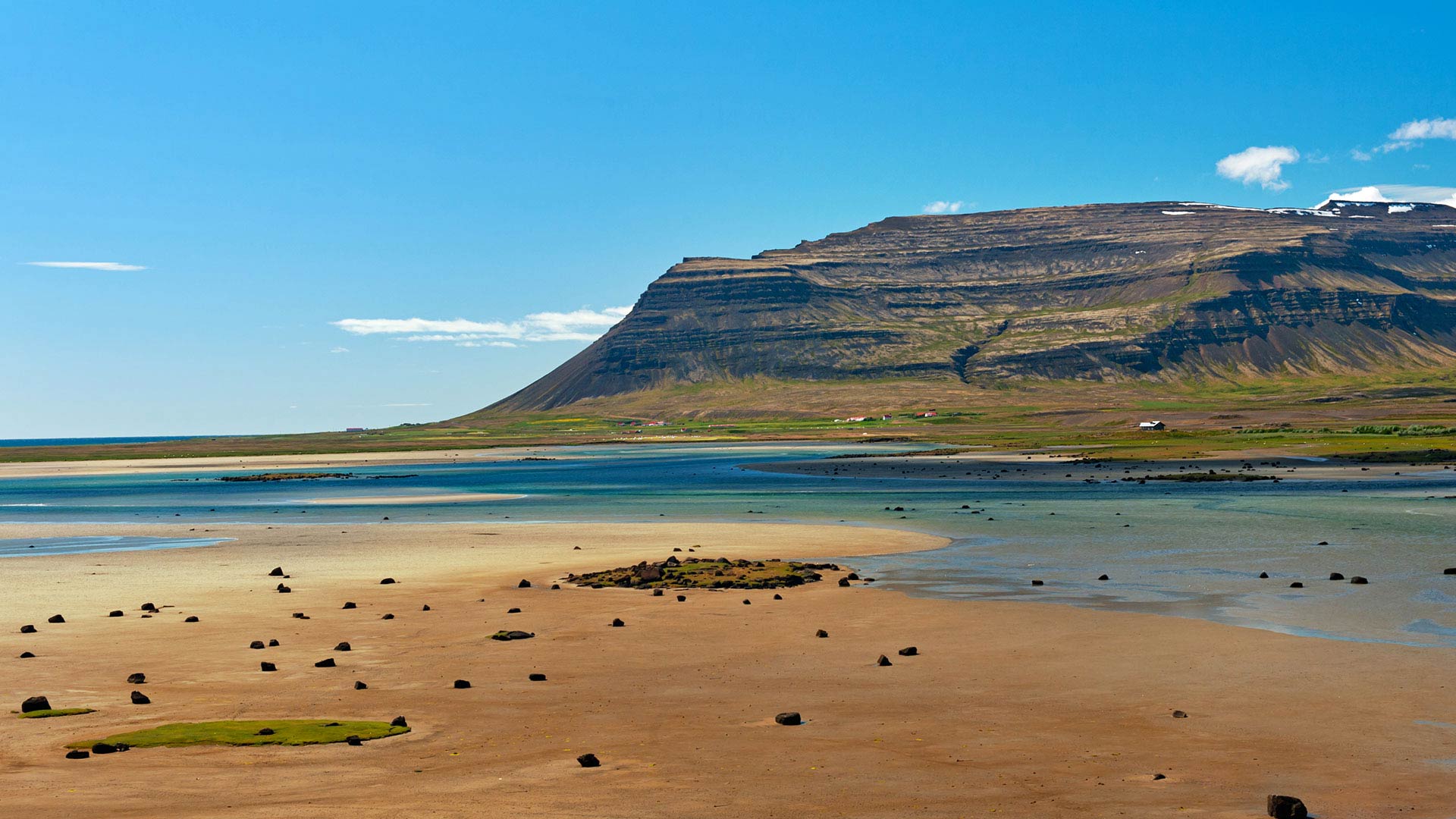
11. Admire glacier lagoons
Glacier lagoons form at the base of glaciers and are filled with meltwater.
The most famous glacier lagoon in Iceland is Jökulsárlón, best known for its seal colony and large floating icebergs. You can see these vast chunks of ice breaking up and shattering on the bordering black-sand beach.
You could also explore the Breiðárlón and Fjallsárlón lagoons, both fed by the same glacier as Jökulsárlón. Or discover Kaldalón, which is found in the Westfjords.
You can enjoy glacier lagoons from dry land, but if possible, book a boat tour. The best time to visit Iceland for these experiences is between May and October, when amphibious boat and zodiac tours are available at Jökulsárlón.

12. Try ice caving
Ice caving in a glacier is one of the most otherworldly experiences you can have while visiting Iceland.
In the depth of winter, when the meltwaters freeze, tunnels and caves are formed within glaciers such as Vatnajökull. Inside, the thick ice usually takes on a bright blue hue, with the colour intensifying as you go deeper.
Because glacial ice caves are ever-changing, it’s vital that you visit them with a trained guide.
For a slightly different caving adventure, visit a lava cave such as Lofthellir, which is filled with naturally occurring ice sculptures.
Good to know: You’ll need to book your ice caving tour well in advance. With Nordic Visitor, you can add activities like this as optional extras to your itinerary. Or speak to your dedicated travel consultant.
- Go ice caving on a winter tour of Iceland
- Related: Top things to do in Iceland in winter

13. Hike on glaciers
Glaciers and ice caps cover 11% of Iceland’s landmass, and you can actually hike on some of them! By exploring these vast, icy terrains you can see a glimpse of Iceland as it was a thousand years ago.
In South Iceland, hike over Sólheimajökull, an outlet from the Mýrdalsjökull glacier. Or walk on the glacier at Skaftafell, also situated in the south.
At first glance, a hike across a glacier’s craggy peaks and deep crevices may seem like tough work – but never fear. Glacier hikes are always led by an experienced guide and are tailored to beginners.
Plus, all the equipment you’ll need will be provided, including crampons, a helmet and an ice axe.
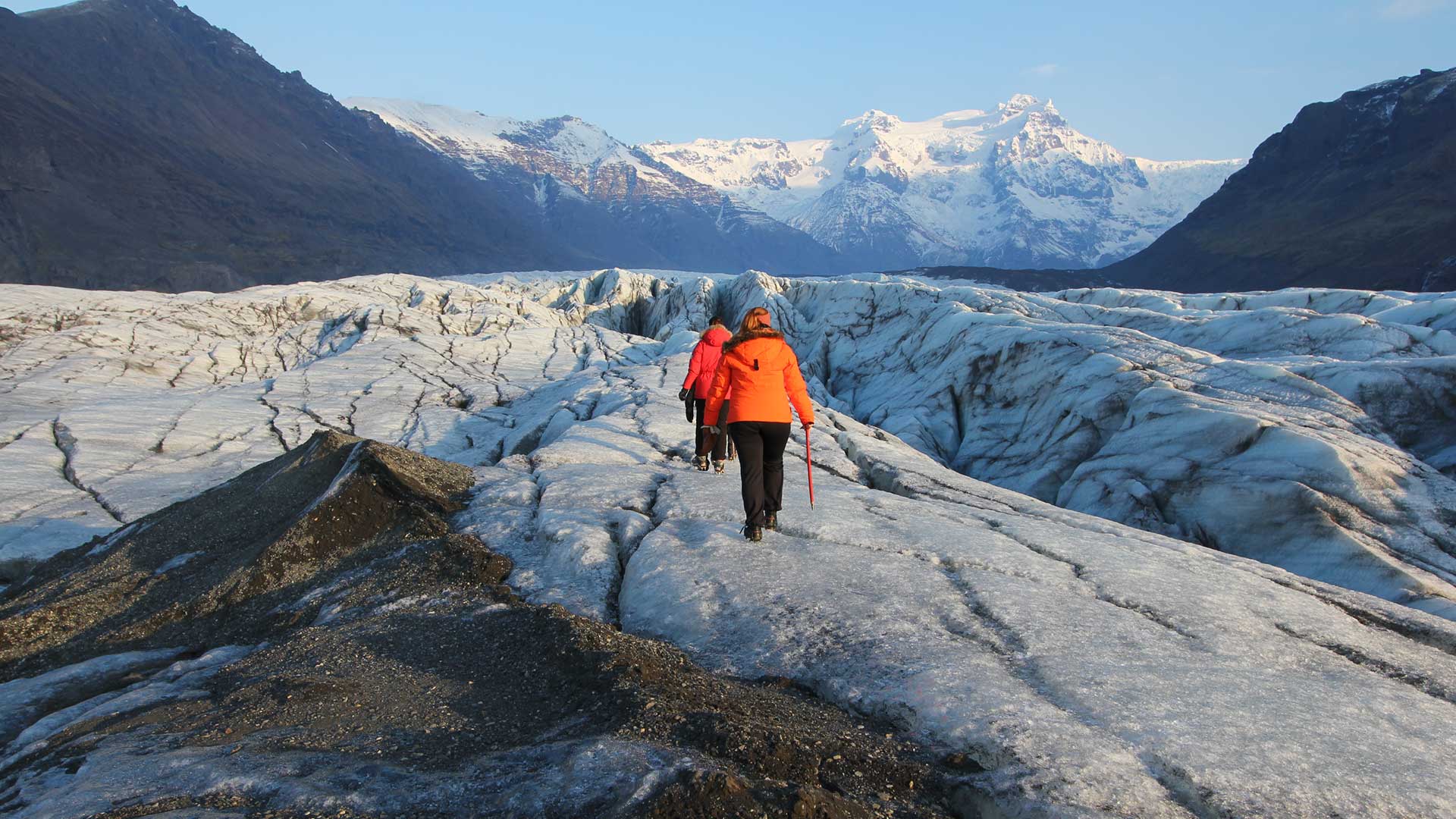
14. Snorkel and dive
You might not think it, but Iceland is home to one of the most renowned diving sites in the world. Head to Þingvellir National Park to take the plunge at Silfra, a fissure between two continental plates that is filled with spring water.
Famed for its crystalline clarity, Silfra has visibility exceeding 90 metres (300 feet), making it the ideal spot for snorkelling and diving.
If you’re keen to dive in the sea, head to the tip of the Reykjanes peninsula. Garður – “garden” in Icelandic – is a popular spot for divers because it’s home to extensive kelp forests rich with marine life.
If you’re taking to the waters as part of an organised tour, you’ll be supplied with a cosy dry suit, so there’s no need to fear the cold!
- Experience snorkelling in Silfra on a self-drive tour of Iceland

15. Explore the highlands in a 4x4
We’ve already mentioned why you should venture into the highlands of Iceland – but here’s why that should happen as part of a 4x4 tour.
The highlands are a mountainous central region of Iceland that can be difficult to traverse because of the condition of the roads, particularly in the winter.
On a 4x4 tour, you can easily access the remote wilds of the highlands. Visit places such as Landmannalaugar – famous for its colourful rhyolite peaks – from the comfort of a 4x4 vehicle driven by an experienced guide.
Alternatively, consider Þakgil, a "mini-highland" experience ideal for exploring off the beaten track. This adventure offers you a thrilling way to uncover the untamed beauty of central Iceland.
- Experience the highlands on a privately guided tour of Iceland
- Related: Iceland's highlands – Your guide to the best parts
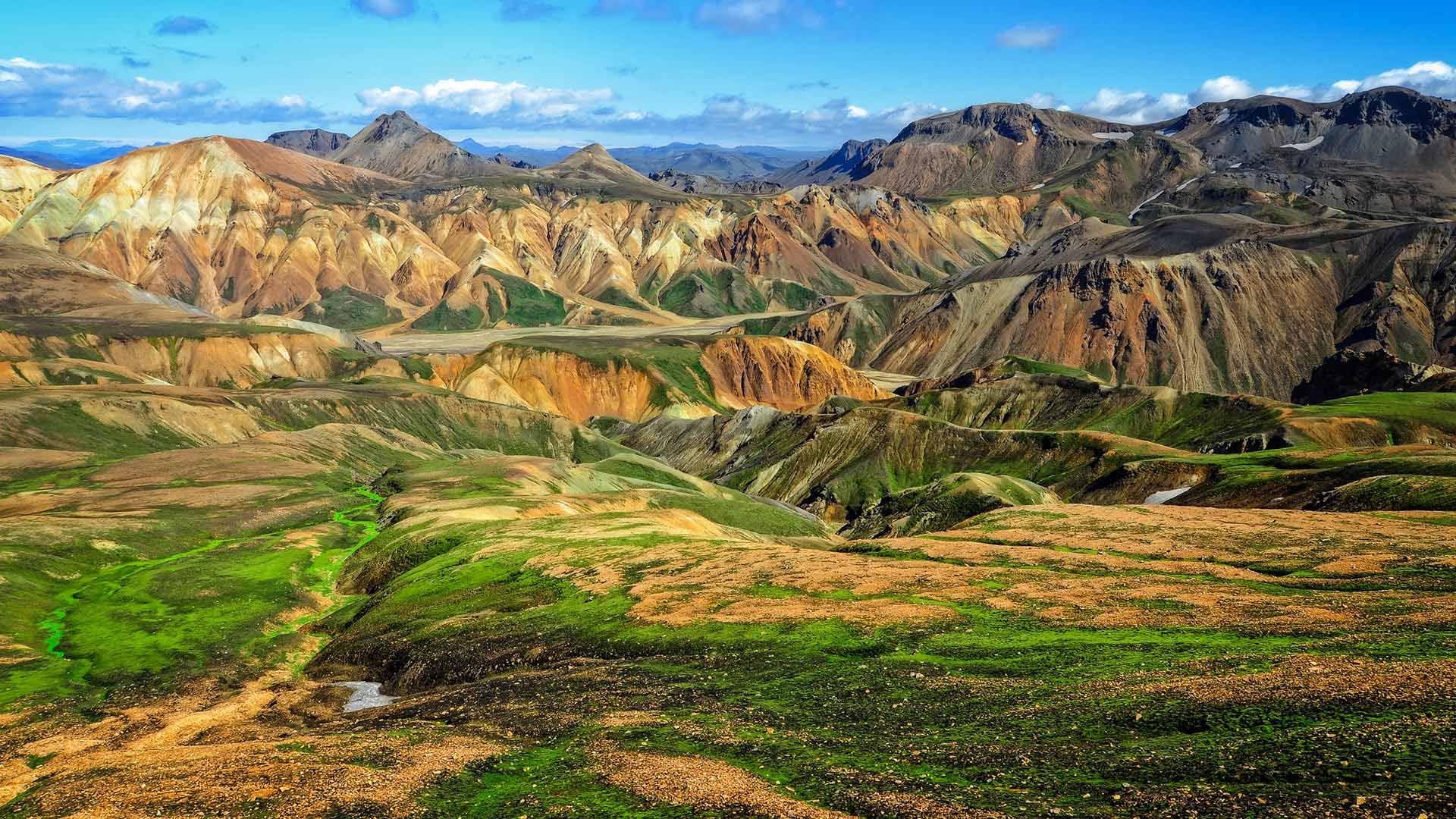
16. Go snowmobiling in summer or winter
Snowmobiling is an immersive way to sightsee, even if you’re not an adrenaline junkie. Whether you’re sweeping across Langjökull glacier or around the snow-draped hills of Akureyri, snowmobiling is a great way to experience the scenery. Plus, it’s guaranteed to put a smile on your face.
Snowmobile tours in Iceland are designed for beginners, so you’ll always be led by an experienced guide. They will provide you with the necessary training, protective gear, and a safe, easy-to-operate vehicle.
- Try snowmobiling and other activities on a summer trip or winter tour of Iceland

17. Get to know the locals
If you really want to make the most of Iceland, make time for the locals! Icelandic people are known for being friendly, welcoming and laidback with an optimistic worldview. This is neatly summed up by the popular catchphrase “Þetta reddast”, which roughly translates to “things will work out OK”.
Get chatting to an Icelander, and you’re guaranteed to get the best tips on local food, attractions and cultural customs. You may end up making a friend for life! One great place to meet people is at the local swimming pools, which often have hot tubs, cold plunges, saunas and more.
Locals use these pools as social hubs, catching up with friends and neighbours while enjoying the warm water, no matter the weather.” – Hanna Lára Ásgeirsdóttir, Iceland-based Travel Consultant.
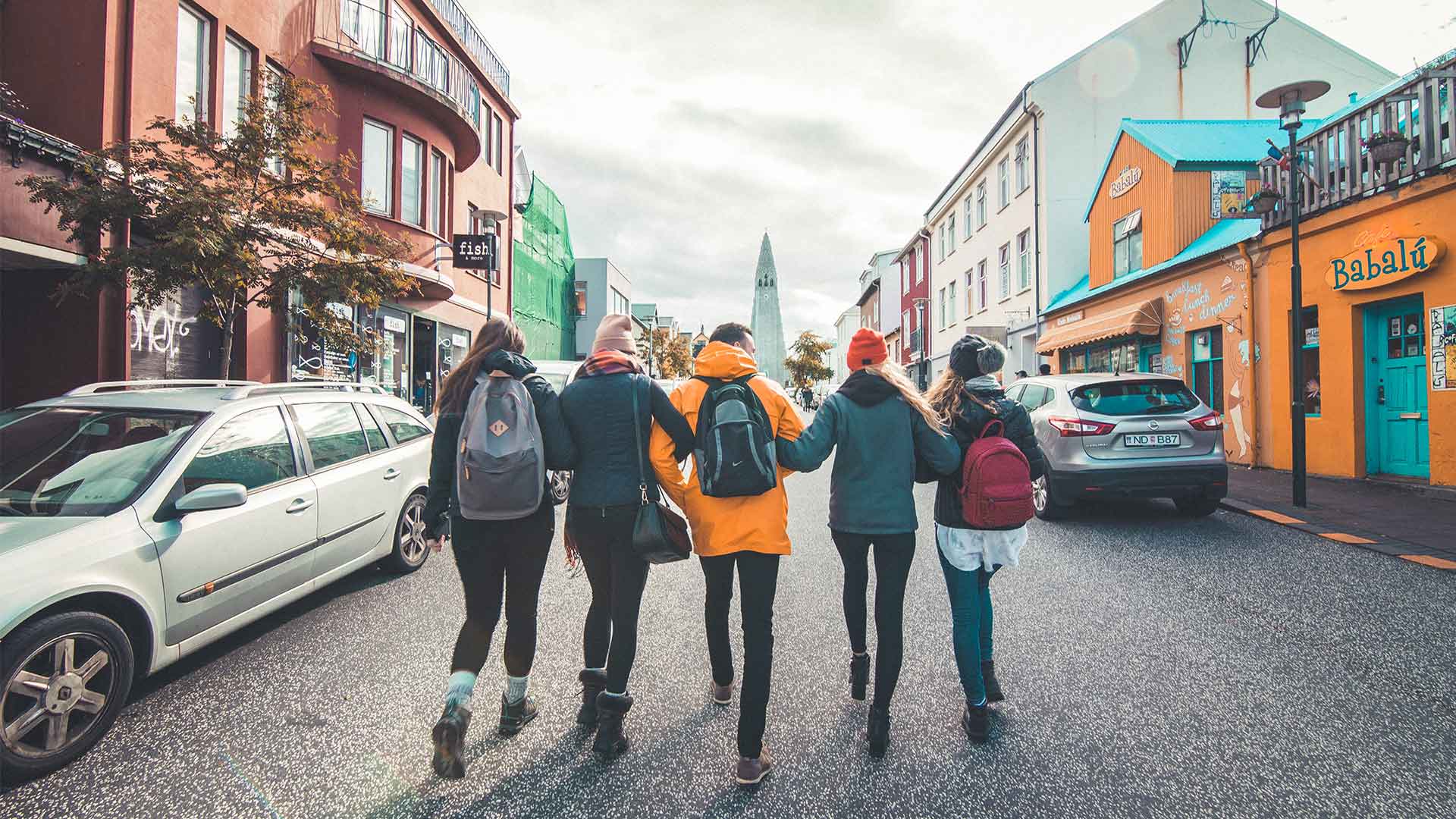
Discover Iceland with Nordic Visitor
These are the 17 things to see and do in Iceland, but believe it or not, there are so many more awesome activities and attractions to enjoy!
We can recommend and arrange experiences to suit your style and tastes. You might be looking for an action-packed trip, a gentle sightseeing tour, or a little bit of both.
The Nordic Visitor Iceland experts will organise the best accommodation, excursions and local transport on your behalf. Leaving you to relax and look forward to an unforgettable trip!
Get in touch with us to learn more, and we’ll start planning your dream Iceland adventure.
